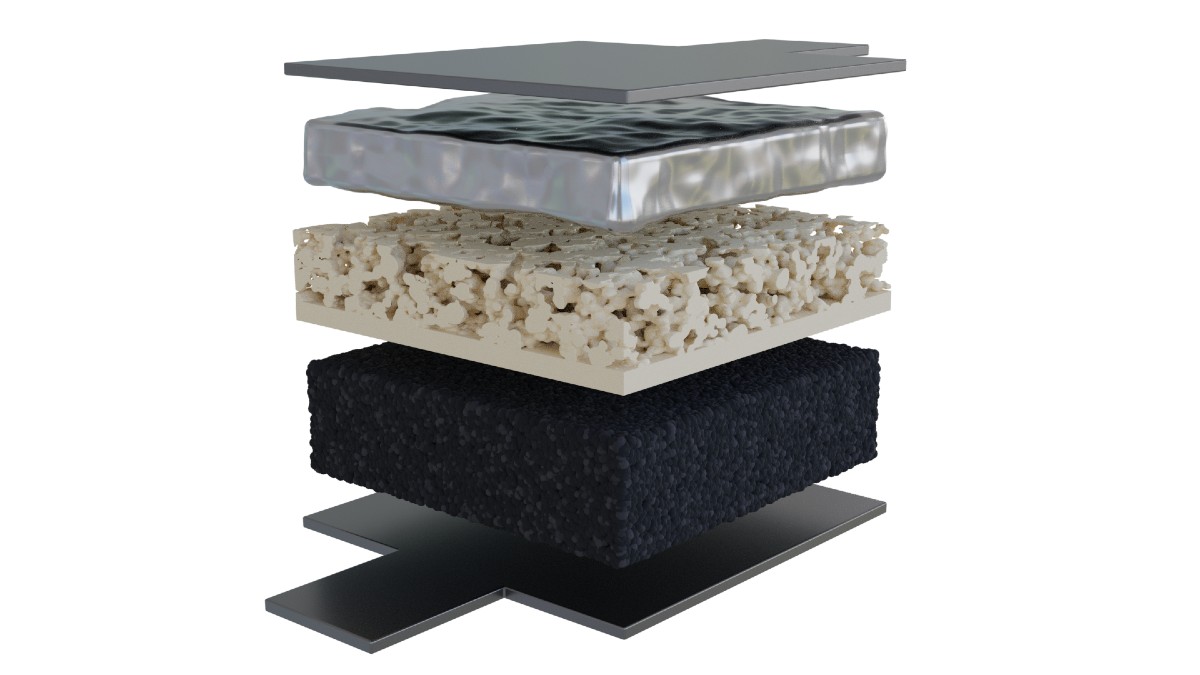
Electrek spoke with Dr. Greg Hitz, founder and CTO at Beltsville, Maryland-based ION Storage Systems, about what solid state batteries are, why they’re considered the “unicorn” of battery technology, why they have yet to hit the market, and how his company is working to move the needle.
Electrek: Could you explain what solid state batteries are, what they’re used for, and how they differ from lithium-ion batteries?
Greg Hitz: Solid state batteries replace the flammable liquid electrolyte in a traditional lithium-ion battery with a solid electrolyte that serves the same function. They’re generally accepted as the key to unlocking the safety and energy density required for advanced electric vehicles and electrified flight.
It’s important to note, though, that not all solid state batteries are created equal. The different materials and configurations that underlie solid state battery technologies matter for safety, performance, energy density, and manufacturability.
Electrek: Solid state batteries are often referred to as the “unicorn” of battery technology. Why is that?
Greg Hitz: It’s a great analogy – you’ve never seen a solid state battery just like you’ve never seen a unicorn. Solid state batteries have long had the potential to outperform the batteries you see in most EV’s today; longer range, shorter recharge times, they’re safer. But nobody has yet shown that solid state batteries can deliver on their performance promise without making major sacrifices during battery pack integration like heating or compression requirements and can be produced with scalable manufacturing techniques.
Electrek: Why haven’t solid state batteries taken off yet?
Greg Hitz: No solid state battery manufacturer has yet to offer a 100% solution. Looking across the industry, there are technologies that have incredible rate performance, great energy density, strong safety, scalable manufacturing, and simple pack integration, but no single product offers all of that without significantly compromising one or more of the other aspects.
This is where we think ION differs from other technologies. Our first market customer will get a battery manufactured in the US that offers 40% more energy than their current solution and meets their needs on rate performance, cycle life, and production costs, all while inherently safe.
After our first market release, our second-generation product will incorporate future developments that will hugely extend the reach of the technology: doubling energy density, increased rate performance, order of magnitude decreases in production cost, qualifying long cycle life, and all the other targets required for wider market release such as EV production.
Electrek: How could solid state batteries achieve scale?
Greg Hitz: Scaling is hard and scaling batteries is even harder.
First, you need to design your battery to use plentiful, inexpensive resources. Cobalt and nickel are expensive and hard to source. ION has developed a battery with a lithium-free anode that supports nickel and cobalt-free cathodes.
Second, and perhaps most importantly, you need to design a battery that’s suited for manufacturing. The biggest targets here are energy-per-area – because cost of production is generally a per-area basis and batteries are sold per-energy – and use of highly scaled existing processing techniques.
Third, you need to create a win-win for manufacturing partners in the ecosystem. Solid state battery manufacturing is a whole new industry and there’s no widely scaled product that exists without an industry behind it. Look at the number of component suppliers for electric vehicles or for lithium-ion batteries. Dozens of companies contribute to the production of each unit sold. That complete package doesn’t yet exist in solid state batteries.
Lastly, you have to be in production to improve your production. That’s why we’re rolling out to smaller markets before we scale to EV. The pain of early production focuses the innovation and makes our EV production stronger.
Electrek: Why have cobalt and nickel become a source of pain for battery makers, and what other obstacles are there?
Greg Hitz: The only game in town for high energy density batteries right now is a nickel- and cobalt-based chemistry. There are alternatives, though.
Auto OEMs are switching to plentiful but less energy dense lithium iron phosphate chemistries for their shorter-range vehicles. Advanced nickel- and cobalt-free cathodes – incompatible with lithium-ion – that offer higher energy density without supply chain constraints exist, and have been waiting patiently for a technology to enable them.
ION’s platform technology is uniquely enabling to these plentiful and greater energy density chemistries and has been demonstrated with these cathodes, including sulfur and high voltage spinel chemistries, to name a few.
Electrek: Where are we in sourcing minerals ethically and sustainably for solid state batteries?
Top comment by Doggydogworld
Premium consumer electronics (phones, laptops, tablets) will outbid EVs for early SS batteries. If a SS battery vendor mostly talks about EVs they're just trying to raise money. If they talk mostly about consumer electronics they might actually be close to having a real product.
Greg Hitz: Solid state batteries unlock completely new chemistries, but that opportunity has to be intentionally harnessed to move to ethical and sustainable supply chains. We’ve worked with suppliers to achieve North American mineral sourcing and are working with recyclers to plan for end-of-life.
Photo: ION Storage Systems
Dr. Greg Hitz led the development of the multilayer garnet structure and co-founded Ion Storage Systems. He brings his experience in Good Manufacturing Practice to the company’s research culture, leading to an efficient transition from lab research to manufacturing operations. Greg received his PhD in materials science & engineering and bachelor’s in chemical engineering from the University of Maryland.
UnderstandSolar is a free service that links you to top-rated solar installers in your region for personalized solar estimates. Tesla now offers price matching, so it’s important to shop for the best quotes. Click here to learn more and get your quotes. — *ad.
FTC: We use income earning auto affiliate links. More.





Comments